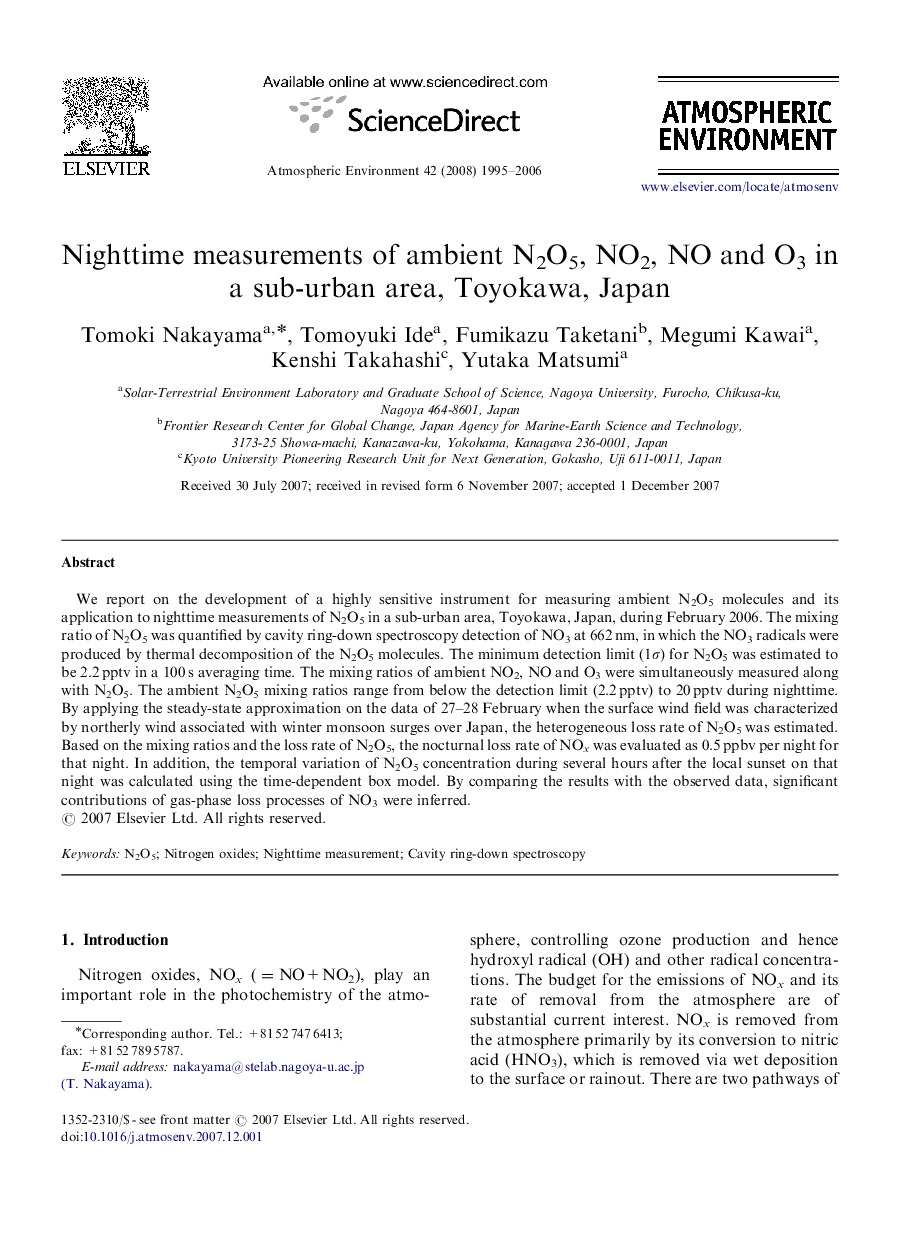| Article ID | Journal | Published Year | Pages | File Type |
|---|---|---|---|---|
| 4442638 | Atmospheric Environment | 2006 | 12 Pages |
We report on the development of a highly sensitive instrument for measuring ambient N2O5 molecules and its application to nighttime measurements of N2O5 in a sub-urban area, Toyokawa, Japan, during February 2006. The mixing ratio of N2O5 was quantified by cavity ring-down spectroscopy detection of NO3 at 662 nm, in which the NO3 radicals were produced by thermal decomposition of the N2O5 molecules. The minimum detection limit (1σ) for N2O5 was estimated to be 2.2 pptv in a 100 s averaging time. The mixing ratios of ambient NO2, NO and O3 were simultaneously measured along with N2O5. The ambient N2O5 mixing ratios range from below the detection limit (2.2 pptv) to 20 pptv during nighttime. By applying the steady-state approximation on the data of 27–28 February when the surface wind field was characterized by northerly wind associated with winter monsoon surges over Japan, the heterogeneous loss rate of N2O5 was estimated. Based on the mixing ratios and the loss rate of N2O5, the nocturnal loss rate of NOx was evaluated as 0.5 ppbv per night for that night. In addition, the temporal variation of N2O5 concentration during several hours after the local sunset on that night was calculated using the time-dependent box model. By comparing the results with the observed data, significant contributions of gas-phase loss processes of NO3 were inferred.
